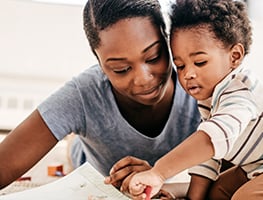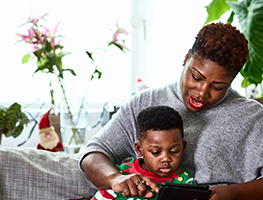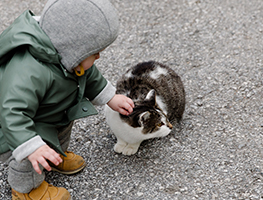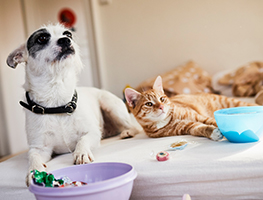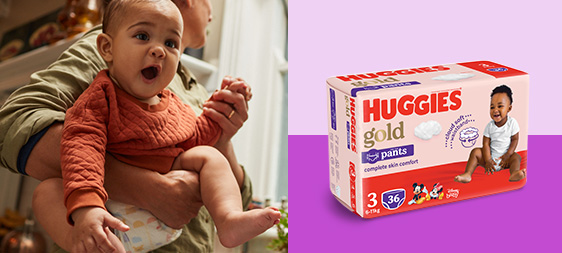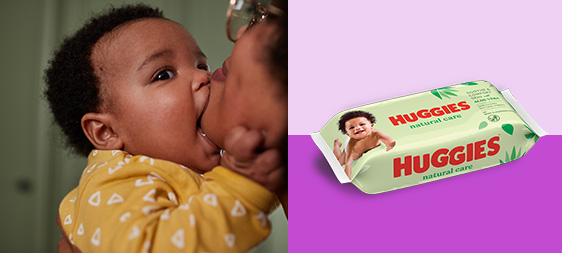Literacy is an essential skill for children. Not only does it play a major role in their educational success, but it is also the key that unlocks the realm of reading and writing. Here are some tips to help make negotiating this world both successful and fun – for you and your child.
Jane, like many parents, was keen to help her four-year-old to start learning to read and write. A keen reader herself, she was sure it would be an easy and memorable experience for her and her son, Andrew. Unfortunately for Jane, her attempts at teaching were unsuccessful and ended with Andrew being agitated and her feeling frustrated. She simply lacked the skills to teach literacy to a pre-schooler.
But you don’t need to be a qualified teacher to help your child to take little steps towards literacy. With patience and a few handy hints this process should be an interesting and rewarding one for you both. One thing to remember is that, no matter how keen or interested your child is, at this age it is important for them to learn through play. If your child is hostile to the process, don’t force it. Come back to it another day.
The hints given here are in two parts, however, both writing and reading strategies should be carried out in tandem with one another as they are inextricably linked.
Part One: Writing
Make sure you are prepared. Have lots of scrap paper for your child to draw on, as well as pencils and a ruler so you can draw lines for them to write in. Remember, for younger children they will need fairly large spaces to write within, as they won’t have fully developed fine motor skills to control letter size. If possible, have some ink stamps or stickers that you can use as a tangible reward for their efforts.
Try to be consistent. This means being prepared to spend time on literacy on a daily basis. However, with a child under four, twenty minutes a day is ample time. It is a small investment for what will be a good return.
The best word to begin with is the child’s own name. Write it out and get them to trace over it. You can repeat this exercise many times over a period of days getting them to use different coloured pencils and decorating their name using glitter or drawings.
Encourage your child to draw all vertical lines from the top to the bottom of a blank page.
All circular shapes should begin at the 2 o’clock position, moving up, left, and around-like the letter c.
Remember praise is crucial. Reinforce how wonderful you think their efforts are.
Encourage them to find the letters of their name on signs when driving or at the shops.
When your child can recognise the letters in their own name you can then move on to other letters in the alphabet. Again, using family members’ or pets’ names is a great point of reference for children. Put out photos of them and get your child to trace the names you have written on a piece of paper. Encourage them to write the names independently as well.
If your child struggles with a particular letter, there are lots of handwriting sheets on the internet that you can use to encourage correct letter recognition. Again, it’s important to make this fun for your child. Display their efforts prominently and encourage other family members to praise their efforts.
When you feel your child is ready to progress further, encourage them to copy your writing. Remember to keep your sentences short though. For example: “The cat sat on the mat.” Have your child copy their letters directly beneath yours. This allows the child to see and copy proper letter and word spacing in addition to proper letter formation, capitalisation, and punctuation. Hint: If you are worried about punctuation and spelling, type the sentence into a word document beforehand and use the spelling and grammar check to ensure you are modelling it correctly.
Part Two: Reading
Reading is an integral part of literacy. So, in addition to writing, incorporate some of the following reading activities.
There are various methods of teaching your child to read. With a little experimentation you may find that one method will appeal to your child more than another. It’s important to be patient and enthusiastic.
A good rule of thumb is to focus on one letter a day. Your child may learn more than one letter in a session or you may find that you need to go back over the same letter a few times until they remember it. Always remain encouraging and supportive.
Start with a letter from your child’s name. It is better to use the second or third letter. Because capital letters make up only five per cent of all letters in written English, it is more important at this early stage to develop your child’s skills using lower case letters.
Read the letter with them and then, once they have established letter recognition, show them other words that include that same letter. Encourage them to sound out the letter they recognise in those words.
Work your way through recognition of the letters in their name and then use family members and friends’ names until they have established letter recognition of the entire alphabet. You can also use pictures of things they are interested in or TV shows they like. Simply write the names below the pictures and read the letters out slowly with them.
The sounds of the letters are often different from the name of the letter. In reading, it is the sounds that count. For example when reading to your child, point to the letter g, and explain to them the different ways of pronouncing it. E.g. This letter is a “gee” and it can make two sounds: “ge” as in the word gorilla and also “dje” as in the word giraffe.”
The 100 words in the information boxes below account for the most commonly used words in English when reading and writing. Not all words can be read using simple phonic rules. Many important words (such as those in the boxes) need to be learned by sight. Begin with the common and simple words and work your way through them slowly.
Use flashcards with simple words from the boxes printed on them. Say the word and get your child to repeat it. Get them to sound out each letter individually and repeat the whole word. TIP: You can buy flashcards, but you can easily make them yourself.
Once they are able to recognise simple words, lay the words out in simple sentence form. For instance: “the cat sat on the mat.” You can vary the sentences in order to retain your child’s interest.
Get your child to draw pictures, especially if they like drawing. Then below their pictures write simple captions. Encourage your child to read the captions to you.
Get them to trace over your caption writing. When they gain confidence get them to copy your caption writing independently rather than tracing over it.
Developing a love of reading within your child is not only a wonderful way to spend time together, it also enables them to develop knowledge and understanding of things they are interested in.
Once Jane had worked out the steps she needed to take with her son, she visited her local library with him. She and Andrew were able to select a range of beautifully illustrated books with simple text about his passion, which was trains. Jane used the books as a tool to help her son with his letter recognition and then worked their way through to simple word recognition.
It is important to remember every child learns at a different rate. If you feel you are not making progress with your child and you are concerned about them, it is useful to consider if they are ready to learn or not. You may also consider an eye test or further assessment by a qualified professional if you consider it necessary.
Box 1: 50 common English words with simple spelling
a | had | lot | she |
about | has | may | so |
again | I | must | that |
am | her | no | the |
and | his | not | them |
as | how | now | then |
be | he | on | this |
been | if | our | too |
but | in | out | under |
for | is | saw | up |
go | it | say | we |
went | will | with | yes |
Box 2: 50 common English words with challenging spelling
all | every | one | to |
almost | gone | only | very |
always | have | other | want |
among | here | quite | was |
any | know | said | were |
around | like | should | what |
because | look | some | where |
by | many | their | who |
come | more | there | why |
could | my | these | would |
do | of | they | you |
does | off | though | your |
down | which | through | when |
It is important to remember that children acquire a working knowledge of the alphabetic system not only through reading but also through writing.
For more information see Reading to childre or Parenting.
Alphabet books and alphabet puzzles, in which children can see and compare letters, are a key to efficient and easy learning.
You can build your own chart to teach your child the letters of the alphabet. Pick words or names that are short enough for your little one to pronounce and then find a fun picture to depict it – this teaches association of words with visual imagery.
e.g.
A a Apple Adam | D d Dad Duck | F f Frog Fish
| Q q Queen Quick |
Have fun!









